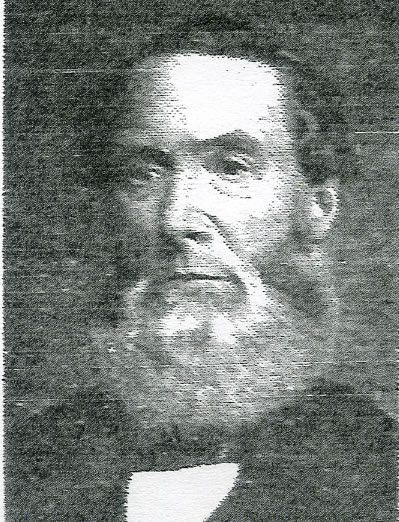By Bobby Grierson
With thanks to Warrick and Strawhorn
In 1866 nine local businessmen signed a petition to the Sheriff of Ayr in terms of the General Police and Improvement (Scotland) Act, 1862 to have Cumnock declared a populous place and therefore a Burgh. The first 9 petitioners were:
David Crichton, Grain Merchant;
William Dalgliesh, Draper;
Daniel King, Wool Manufacturer;
William Ettershank, Banker;
David Lawson Scott, School teacher;
Duncan Ballantine, Bookseller;
John McCowan, Innkeeper;
Anthony McClymont, Solicitor;
Alexander Muir, Grocer.
The burgh boundaries were defined by a line running from near the railway station at the top of Glaisnock Street south towards the New Cumnock Road, north-west to Bridgend on the Ayr Road, over the Lugar Water to include the Holmhead area, and up the Lugar thereafter to the railway station. After various legal formalities, the Sheriff decided that this was a populous place as defined in the Act. Rates would be chargeable to householders and those who paid £10 or more in rent would be able to elect a Town Council to carry out the necessary business. Therefore a meeting was called of £10 householders at Cumnock within the Hall in or near Glaisnock Street in the yard of the Dumfries Arms Inn there on 2nd November 1866. At that meeting it was proposed by McClymont and Scott, two of the petitioners, that Cumnock be made a burgh.
The Poll
There was opposition, however, and an amendment that the Act be not adopted, moved by William Johnstone and seconded by George MacArvail, was carried. But the petitioners were able to demand a poll and this was arranged to be held three days later on 5th November. Feelings were running high, and though few people had the right to vote, the town was sharply divided on the issue. The result of the poll was declared on 6th November when by thirty-five votes to thirty-two, the Act was adopted and Cumnock became a police burgh. The majority was small but, says Warrick, “… it was sufficient.’
For the adoption of the Act – John Templeton, shoemaker; Daniel King, dyer; William Ettershank, banker; John, Allan, grain dealer; James Paterson, draper; David Earle; William McLatchie, wright; Alex Muir, grocer; Thomas Barrowman, miner; John Rankin, painter; George Samson, grocer; Duncan Ballantine, printer; Dr Lawrence; Rev William Hutton; John Ballantine, photographer; James Murray, innkeeper; Anthony M’Clymont, writer; Hamilton Rose, writer; James Dalgliesh, millwright; David L Scott. teacher; Andrew Murdoch, mason; Andrew White, banker; David Crichton, baker; Hew Crichton, WS; William Dalgliesh, draper; John Drummond, millwright; William White, farmer; George Alexander, carrier; Robert Dalgliesh, dealer; John McClymont, innkeeper; David McLeod, wright, and William McGavin, miller. 35 Votes.
Against the Adoption of the Act – William Johnstone, grocer; James Hutcheson, wright; William Crawford; flesher; Alexander N Moore, watchmaker; Robert Bain, innkeeper; James Ramage, grocer; William Hyslop. saddler; Andrew Jardine, dealer; John Moodie, agent; Henry Merry, smith; John Baird, draper; William Lammont, farmer; William Lammont jnr, farmer; Samuel Galbraith, grocer; James Howat, grocer; William Wilson, innkeeper; James McClannachan, innkeeper; William MacKinnel, draper; James Weir, innkeeper; John Kay, grocer; John McGavin, baker; James Boswell, farmer; George Findlay. innkeeper; George McKervail shoemaker; Hugh Climie, flesher; Thomas Crawford. draper; William Blyth, flesher; Hugh McKerrow, dealer; David Shaw, draper; Robert Walker, grocer and William Kay, grocer. 32; Votes.
Elections
It was thereafter decided that the burgh should be known as the Burgh of Cumnock and Holmhead, that the council should comprise nine commissioners, and that it should not be divided into wards. Just over a month later on 7th December 1866 at a meeting of householders as before, the following Commissioners were elected by public poll, to form the first Council:
William Dalgliesh, Draper 20 votes,
David Lawson Scott, Teacher 20 votes,
William McLetchie, Wright 20 votes,
Thomas Barrowman, Contractor 20 votes,
Daniel King, Wool Manufacturer 20 votes,
William McGavin, Miller 18 votes,
John Drummond, Engineer 18 votes,
John McCowan, Inn Keeper 18 votes,
Duncan Ballantine, Bookseller 16 votes.








